Carbonated Beverages
Juices
Functional Drinks
Dairy-based Drinks
Water
Supermarkets
Convenience Stores
Online Retail
Specialty Stores
Food Service
Adults
Children
Teenagers
Health-conscious Consumers
Athletes
Bottles
Cans
Pouches
Tetra Packs
North America
Europe
South America
Asia Pacific
Middle East and Africa
North America Outlook (USD Billion, 2019-2035)
North America Non-Alcoholic Beverages Market by Product Type
Carbonated Beverages
Juices
Functional Drinks
Dairy-based Drinks
Water
North America Non-Alcoholic Beverages Market by Distribution Channel Type
Supermarkets
Convenience Stores
Online Retail
Specialty Stores
Food Service
North America Non-Alcoholic Beverages Market by Consumer Type
Adults
Children
Teenagers
Health-conscious Consumers
Athletes
North America Non-Alcoholic Beverages Market by Packaging Type
Bottles
Cans
Pouches
Tetra Packs
North America Non-Alcoholic Beverages Market by Regional Type
US
Canada
US Outlook (USD Billion, 2019-2035)
US Non-Alcoholic Beverages Market by Product Type
Carbonated Beverages
Juices
Functional Drinks
Dairy-based Drinks
Water
US Non-Alcoholic Beverages Market by Distribution Channel Type
Supermarkets
Convenience Stores
Online Retail
Specialty Stores
Food Service
US Non-Alcoholic Beverages Market by Consumer Type
Adults
Children
Teenagers
Health-conscious Consumers
Athletes
US Non-Alcoholic Beverages Market by Packaging Type
Bottles
Cans
Pouches
Tetra Packs
CANADA Outlook (USD Billion, 2019-2035)
CANADA Non-Alcoholic Beverages Market by Product Type
Carbonated Beverages
Juices
Functional Drinks
Dairy-based Drinks
Water
CANADA Non-Alcoholic Beverages Market by Distribution Channel Type
Supermarkets
Convenience Stores
Online Retail
Specialty Stores
Food Service
CANADA Non-Alcoholic Beverages Market by Consumer Type
Adults
Children
Teenagers
Health-conscious Consumers
Athletes
CANADA Non-Alcoholic Beverages Market by Packaging Type
Bottles
Cans
Pouches
Tetra Packs
Europe Outlook (USD Billion, 2019-2035)
Europe Non-Alcoholic Beverages Market by Product Type
Carbonated Beverages
Juices
Functional Drinks
Dairy-based Drinks
Water
Europe Non-Alcoholic Beverages Market by Distribution Channel Type
Supermarkets
Convenience Stores
Online Retail
Specialty Stores
Food Service
Europe Non-Alcoholic Beverages Market by Consumer Type
Adults
Children
Teenagers
Health-conscious Consumers
Athletes
Europe Non-Alcoholic Beverages Market by Packaging Type
Bottles
Cans
Pouches
Tetra Packs
Europe Non-Alcoholic Beverages Market by Regional Type
Germany
UK
France
Russia
Italy
Spain
Rest of Europe
GERMANY Outlook (USD Billion, 2019-2035)
GERMANY Non-Alcoholic Beverages Market by Product Type
Carbonated Beverages
Juices
Functional Drinks
Dairy-based Drinks
Water
GERMANY Non-Alcoholic Beverages Market by Distribution Channel Type
Supermarkets
Convenience Stores
Online Retail
Specialty Stores
Food Service
GERMANY Non-Alcoholic Beverages Market by Consumer Type
Adults
Children
Teenagers
Health-conscious Consumers
Athletes
GERMANY Non-Alcoholic Beverages Market by Packaging Type
Bottles
Cans
Pouches
Tetra Packs
UK Outlook (USD Billion, 2019-2035)
UK Non-Alcoholic Beverages Market by Product Type
Carbonated Beverages
Juices
Functional Drinks
Dairy-based Drinks
Water
UK Non-Alcoholic Beverages Market by Distribution Channel Type
Supermarkets
Convenience Stores
Online Retail
Specialty Stores
Food Service
UK Non-Alcoholic Beverages Market by Consumer Type
Adults
Children
Teenagers
Health-conscious Consumers
Athletes
UK Non-Alcoholic Beverages Market by Packaging Type
Bottles
Cans
Pouches
Tetra Packs
FRANCE Outlook (USD Billion, 2019-2035)
FRANCE Non-Alcoholic Beverages Market by Product Type
Carbonated Beverages
Juices
Functional Drinks
Dairy-based Drinks
Water
FRANCE Non-Alcoholic Beverages Market by Distribution Channel Type
Supermarkets
Convenience Stores
Online Retail
Specialty Stores
Food Service
FRANCE Non-Alcoholic Beverages Market by Consumer Type
Adults
Children
Teenagers
Health-conscious Consumers
Athletes
FRANCE Non-Alcoholic Beverages Market by Packaging Type
Bottles
Cans
Pouches
Tetra Packs
RUSSIA Outlook (USD Billion, 2019-2035)
RUSSIA Non-Alcoholic Beverages Market by Product Type
Carbonated Beverages
Juices
Functional Drinks
Dairy-based Drinks
Water
RUSSIA Non-Alcoholic Beverages Market by Distribution Channel Type
Supermarkets
Convenience Stores
Online Retail
Specialty Stores
Food Service
RUSSIA Non-Alcoholic Beverages Market by Consumer Type
Adults
Children
Teenagers
Health-conscious Consumers
Athletes
RUSSIA Non-Alcoholic Beverages Market by Packaging Type
Bottles
Cans
Pouches
Tetra Packs
ITALY Outlook (USD Billion, 2019-2035)
ITALY Non-Alcoholic Beverages Market by Product Type
Carbonated Beverages
Juices
Functional Drinks
Dairy-based Drinks
Water
ITALY Non-Alcoholic Beverages Market by Distribution Channel Type
Supermarkets
Convenience Stores
Online Retail
Specialty Stores
Food Service
ITALY Non-Alcoholic Beverages Market by Consumer Type
Adults
Children
Teenagers
Health-conscious Consumers
Athletes
ITALY Non-Alcoholic Beverages Market by Packaging Type
Bottles
Cans
Pouches
Tetra Packs
SPAIN Outlook (USD Billion, 2019-2035)
SPAIN Non-Alcoholic Beverages Market by Product Type
Carbonated Beverages
Juices
Functional Drinks
Dairy-based Drinks
Water
SPAIN Non-Alcoholic Beverages Market by Distribution Channel Type
Supermarkets
Convenience Stores
Online Retail
Specialty Stores
Food Service
SPAIN Non-Alcoholic Beverages Market by Consumer Type
Adults
Children
Teenagers
Health-conscious Consumers
Athletes
SPAIN Non-Alcoholic Beverages Market by Packaging Type
Bottles
Cans
Pouches
Tetra Packs
REST OF EUROPE Outlook (USD Billion, 2019-2035)
REST OF EUROPE Non-Alcoholic Beverages Market by Product Type
Carbonated Beverages
Juices
Functional Drinks
Dairy-based Drinks
Water
REST OF EUROPE Non-Alcoholic Beverages Market by Distribution Channel Type
Supermarkets
Convenience Stores
Online Retail
Specialty Stores
Food Service
REST OF EUROPE Non-Alcoholic Beverages Market by Consumer Type
Adults
Children
Teenagers
Health-conscious Consumers
Athletes
REST OF EUROPE Non-Alcoholic Beverages Market by Packaging Type
Bottles
Cans
Pouches
Tetra Packs
APAC Outlook (USD Billion, 2019-2035)
APAC Non-Alcoholic Beverages Market by Product Type
Carbonated Beverages
Juices
Functional Drinks
Dairy-based Drinks
Water
APAC Non-Alcoholic Beverages Market by Distribution Channel Type
Supermarkets
Convenience Stores
Online Retail
Specialty Stores
Food Service
APAC Non-Alcoholic Beverages Market by Consumer Type
Adults
Children
Teenagers
Health-conscious Consumers
Athletes
APAC Non-Alcoholic Beverages Market by Packaging Type
Bottles
Cans
Pouches
Tetra Packs
APAC Non-Alcoholic Beverages Market by Regional Type
China
India
Japan
South Korea
Malaysia
Thailand
Indonesia
Rest of APAC
CHINA Outlook (USD Billion, 2019-2035)
CHINA Non-Alcoholic Beverages Market by Product Type
Carbonated Beverages
Juices
Functional Drinks
Dairy-based Drinks
Water
CHINA Non-Alcoholic Beverages Market by Distribution Channel Type
Supermarkets
Convenience Stores
Online Retail
Specialty Stores
Food Service
CHINA Non-Alcoholic Beverages Market by Consumer Type
Adults
Children
Teenagers
Health-conscious Consumers
Athletes
CHINA Non-Alcoholic Beverages Market by Packaging Type
Bottles
Cans
Pouches
Tetra Packs
INDIA Outlook (USD Billion, 2019-2035)
INDIA Non-Alcoholic Beverages Market by Product Type
Carbonated Beverages
Juices
Functional Drinks
Dairy-based Drinks
Water
INDIA Non-Alcoholic Beverages Market by Distribution Channel Type
Supermarkets
Convenience Stores
Online Retail
Specialty Stores
Food Service
INDIA Non-Alcoholic Beverages Market by Consumer Type
Adults
Children
Teenagers
Health-conscious Consumers
Athletes
INDIA Non-Alcoholic Beverages Market by Packaging Type
Bottles
Cans
Pouches
Tetra Packs
JAPAN Outlook (USD Billion, 2019-2035)
JAPAN Non-Alcoholic Beverages Market by Product Type
Carbonated Beverages
Juices
Functional Drinks
Dairy-based Drinks
Water
JAPAN Non-Alcoholic Beverages Market by Distribution Channel Type
Supermarkets
Convenience Stores
Online Retail
Specialty Stores
Food Service
JAPAN Non-Alcoholic Beverages Market by Consumer Type
Adults
Children
Teenagers
Health-conscious Consumers
Athletes
JAPAN Non-Alcoholic Beverages Market by Packaging Type
Bottles
Cans
Pouches
Tetra Packs
SOUTH KOREA Outlook (USD Billion, 2019-2035)
SOUTH KOREA Non-Alcoholic Beverages Market by Product Type
Carbonated Beverages
Juices
Functional Drinks
Dairy-based Drinks
Water
SOUTH KOREA Non-Alcoholic Beverages Market by Distribution Channel Type
Supermarkets
Convenience Stores
Online Retail
Specialty Stores
Food Service
SOUTH KOREA Non-Alcoholic Beverages Market by Consumer Type
Adults
Children
Teenagers
Health-conscious Consumers
Athletes
SOUTH KOREA Non-Alcoholic Beverages Market by Packaging Type
Bottles
Cans
Pouches
Tetra Packs
MALAYSIA Outlook (USD Billion, 2019-2035)
MALAYSIA Non-Alcoholic Beverages Market by Product Type
Carbonated Beverages
Juices
Functional Drinks
Dairy-based Drinks
Water
MALAYSIA Non-Alcoholic Beverages Market by Distribution Channel Type
Supermarkets
Convenience Stores
Online Retail
Specialty Stores
Food Service
MALAYSIA Non-Alcoholic Beverages Market by Consumer Type
Adults
Children
Teenagers
Health-conscious Consumers
Athletes
MALAYSIA Non-Alcoholic Beverages Market by Packaging Type
Bottles
Cans
Pouches
Tetra Packs
THAILAND Outlook (USD Billion, 2019-2035)
THAILAND Non-Alcoholic Beverages Market by Product Type
Carbonated Beverages
Juices
Functional Drinks
Dairy-based Drinks
Water
THAILAND Non-Alcoholic Beverages Market by Distribution Channel Type
Supermarkets
Convenience Stores
Online Retail
Specialty Stores
Food Service
THAILAND Non-Alcoholic Beverages Market by Consumer Type
Adults
Children
Teenagers
Health-conscious Consumers
Athletes
THAILAND Non-Alcoholic Beverages Market by Packaging Type
Bottles
Cans
Pouches
Tetra Packs
INDONESIA Outlook (USD Billion, 2019-2035)
INDONESIA Non-Alcoholic Beverages Market by Product Type
Carbonated Beverages
Juices
Functional Drinks
Dairy-based Drinks
Water
INDONESIA Non-Alcoholic Beverages Market by Distribution Channel Type
Supermarkets
Convenience Stores
Online Retail
Specialty Stores
Food Service
INDONESIA Non-Alcoholic Beverages Market by Consumer Type
Adults
Children
Teenagers
Health-conscious Consumers
Athletes
INDONESIA Non-Alcoholic Beverages Market by Packaging Type
Bottles
Cans
Pouches
Tetra Packs
REST OF APAC Outlook (USD Billion, 2019-2035)
REST OF APAC Non-Alcoholic Beverages Market by Product Type
Carbonated Beverages
Juices
Functional Drinks
Dairy-based Drinks
Water
REST OF APAC Non-Alcoholic Beverages Market by Distribution Channel Type
Supermarkets
Convenience Stores
Online Retail
Specialty Stores
Food Service
REST OF APAC Non-Alcoholic Beverages Market by Consumer Type
Adults
Children
Teenagers
Health-conscious Consumers
Athletes
REST OF APAC Non-Alcoholic Beverages Market by Packaging Type
Bottles
Cans
Pouches
Tetra Packs
South America Outlook (USD Billion, 2019-2035)
South America Non-Alcoholic Beverages Market by Product Type
Carbonated Beverages
Juices
Functional Drinks
Dairy-based Drinks
Water
South America Non-Alcoholic Beverages Market by Distribution Channel Type
Supermarkets
Convenience Stores
Online Retail
Specialty Stores
Food Service
South America Non-Alcoholic Beverages Market by Consumer Type
Adults
Children
Teenagers
Health-conscious Consumers
Athletes
South America Non-Alcoholic Beverages Market by Packaging Type
Bottles
Cans
Pouches
Tetra Packs
South America Non-Alcoholic Beverages Market by Regional Type
Brazil
Mexico
Argentina
Rest of South America
BRAZIL Outlook (USD Billion, 2019-2035)
BRAZIL Non-Alcoholic Beverages Market by Product Type
Carbonated Beverages
Juices
Functional Drinks
Dairy-based Drinks
Water
BRAZIL Non-Alcoholic Beverages Market by Distribution Channel Type
Supermarkets
Convenience Stores
Online Retail
Specialty Stores
Food Service
BRAZIL Non-Alcoholic Beverages Market by Consumer Type
Adults
Children
Teenagers
Health-conscious Consumers
Athletes
BRAZIL Non-Alcoholic Beverages Market by Packaging Type
Bottles
Cans
Pouches
Tetra Packs
MEXICO Outlook (USD Billion, 2019-2035)
MEXICO Non-Alcoholic Beverages Market by Product Type
Carbonated Beverages
Juices
Functional Drinks
Dairy-based Drinks
Water
MEXICO Non-Alcoholic Beverages Market by Distribution Channel Type
Supermarkets
Convenience Stores
Online Retail
Specialty Stores
Food Service
MEXICO Non-Alcoholic Beverages Market by Consumer Type
Adults
Children
Teenagers
Health-conscious Consumers
Athletes
MEXICO Non-Alcoholic Beverages Market by Packaging Type
Bottles
Cans
Pouches
Tetra Packs
ARGENTINA Outlook (USD Billion, 2019-2035)
ARGENTINA Non-Alcoholic Beverages Market by Product Type
Carbonated Beverages
Juices
Functional Drinks
Dairy-based Drinks
Water
ARGENTINA Non-Alcoholic Beverages Market by Distribution Channel Type
Supermarkets
Convenience Stores
Online Retail
Specialty Stores
Food Service
ARGENTINA Non-Alcoholic Beverages Market by Consumer Type
Adults
Children
Teenagers
Health-conscious Consumers
Athletes
ARGENTINA Non-Alcoholic Beverages Market by Packaging Type
Bottles
Cans
Pouches
Tetra Packs
REST OF SOUTH AMERICA Outlook (USD Billion, 2019-2035)
REST OF SOUTH AMERICA Non-Alcoholic Beverages Market by Product Type
Carbonated Beverages
Juices
Functional Drinks
Dairy-based Drinks
Water
REST OF SOUTH AMERICA Non-Alcoholic Beverages Market by Distribution Channel Type
Supermarkets
Convenience Stores
Online Retail
Specialty Stores
Food Service
REST OF SOUTH AMERICA Non-Alcoholic Beverages Market by Consumer Type
Adults
Children
Teenagers
Health-conscious Consumers
Athletes
REST OF SOUTH AMERICA Non-Alcoholic Beverages Market by Packaging Type
Bottles
Cans
Pouches
Tetra Packs
MEA Outlook (USD Billion, 2019-2035)
MEA Non-Alcoholic Beverages Market by Product Type
Carbonated Beverages
Juices
Functional Drinks
Dairy-based Drinks
Water
MEA Non-Alcoholic Beverages Market by Distribution Channel Type
Supermarkets
Convenience Stores
Online Retail
Specialty Stores
Food Service
MEA Non-Alcoholic Beverages Market by Consumer Type
Adults
Children
Teenagers
Health-conscious Consumers
Athletes
MEA Non-Alcoholic Beverages Market by Packaging Type
Bottles
Cans
Pouches
Tetra Packs
MEA Non-Alcoholic Beverages Market by Regional Type
GCC Countries
South Africa
Rest of MEA
GCC COUNTRIES Outlook (USD Billion, 2019-2035)
GCC COUNTRIES Non-Alcoholic Beverages Market by Product Type
Carbonated Beverages
Juices
Functional Drinks
Dairy-based Drinks
Water
GCC COUNTRIES Non-Alcoholic Beverages Market by Distribution Channel Type
Supermarkets
Convenience Stores
Online Retail
Specialty Stores
Food Service
GCC COUNTRIES Non-Alcoholic Beverages Market by Consumer Type
Adults
Children
Teenagers
Health-conscious Consumers
Athletes
GCC COUNTRIES Non-Alcoholic Beverages Market by Packaging Type
Bottles
Cans
Pouches
Tetra Packs
SOUTH AFRICA Outlook (USD Billion, 2019-2035)
SOUTH AFRICA Non-Alcoholic Beverages Market by Product Type
Carbonated Beverages
Juices
Functional Drinks
Dairy-based Drinks
Water
SOUTH AFRICA Non-Alcoholic Beverages Market by Distribution Channel Type
Supermarkets
Convenience Stores
Online Retail
Specialty Stores
Food Service
SOUTH AFRICA Non-Alcoholic Beverages Market by Consumer Type
Adults
Children
Teenagers
Health-conscious Consumers
Athletes
SOUTH AFRICA Non-Alcoholic Beverages Market by Packaging Type
Bottles
Cans
Pouches
Tetra Packs
REST OF MEA Outlook (USD Billion, 2019-2035)
REST OF MEA Non-Alcoholic Beverages Market by Product Type
Carbonated Beverages
Juices
Functional Drinks
Dairy-based Drinks
Water
REST OF MEA Non-Alcoholic Beverages Market by Distribution Channel Type
Supermarkets
Convenience Stores
Online Retail
Specialty Stores
Food Service
REST OF MEA Non-Alcoholic Beverages Market by Consumer Type
Adults
Children
Teenagers
Health-conscious Consumers
Athletes
REST OF MEA Non-Alcoholic Beverages Market by Packaging Type
Bottles
Cans
Pouches
Tetra Packs

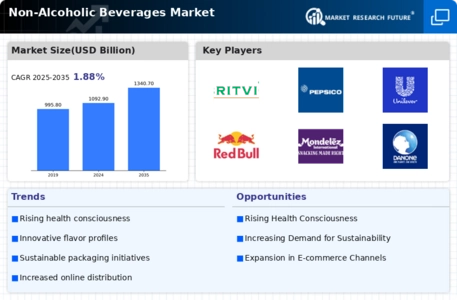
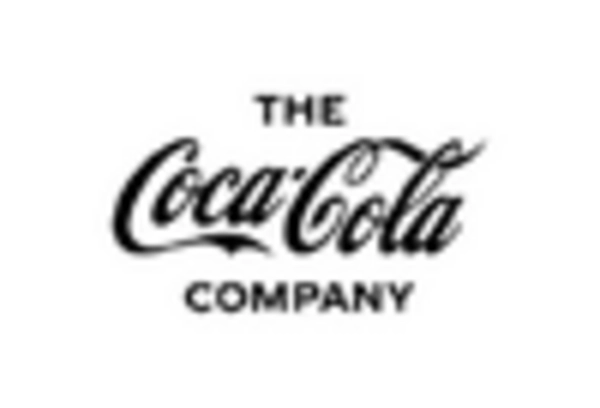
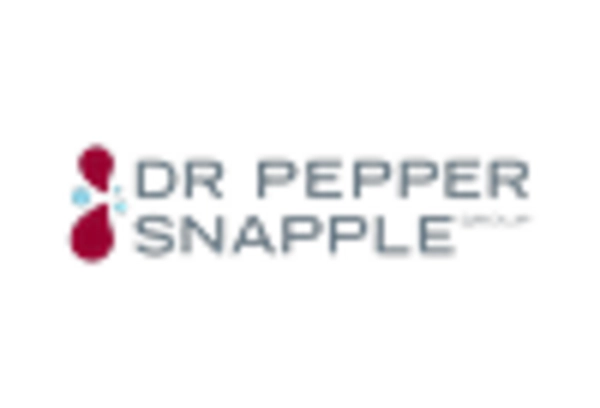
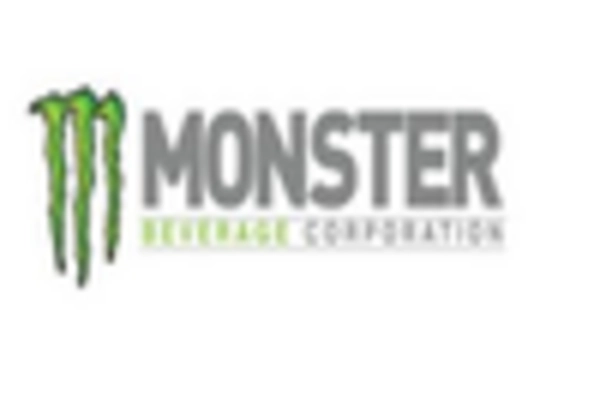

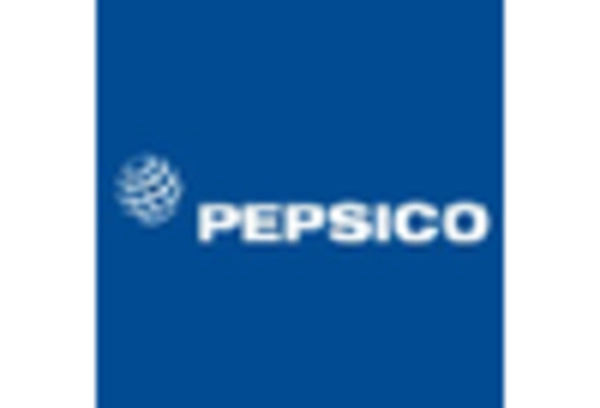
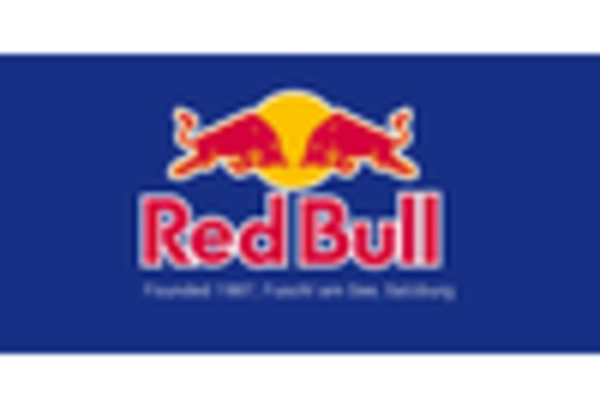









Leave a Comment